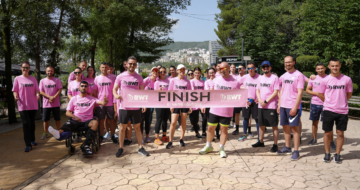UAntwerp spin-off splits CO2 molecules into useful raw materials

A new start-up is using plasma technology from the UAntwerp to break down harmful CO2 molecules into their original building blocks. With these ingredients, companies can start working again to produce biofuels, chemicals or other useful raw materials.
A new start-up is using plasma technology from the UAntwerp to break down harmful CO2 molecules into their original building blocks. With these ingredients, companies can start working again to produce biofuels, chemicals or other useful raw materials.
A new start-up is using plasma technology from the UAntwerp to break down harmful CO2 molecules into their original building blocks. With these ingredients, companies can start working again to produce biofuels, chemicals or other useful raw materials.
The start-up D-CRBN arose from the research group PLASMANT, at the Chemistry Department of the UAntwerpen. Using an innovative plasma-based technology, the group was able to split harmful CO2 molecules into original building blocks.
"Chemistry is about the building blocks of life," explains Professor Annemie Bogaerts. "We convert those building blocks back into raw materials and useful compounds."
The new technology is now making the transition from the lab to practice. "We can help companies make the transition to a circular and more sustainable economy," explains CCO David Ziegler. "We are primarily targeting companies in the Port of Antwerp, especially in the (petro)chemical and steel industries. At the moment we are already in talks with promising projects in the port."
The start-up is based at BlueChem, the incubator for innovative chemistry in Antwerp.
Latest insights & stories

A Global Movement: The World Unites in a Pink Pledge for Clean and Sustainable Water
5,000 participants. 32 countries. €30,000 funds raised. And that's just the beginning.
Picture this: One step that sends ripples across the globe, transforming lives and creating waves of change. You might wonder, how can such a simple action for most of us have such a profound impact?

Sustainability and circularity in construction
Join us in transforming the future of construction, creating buildings that not only stand the test of time but also contribute to a healthier planet!

RainTunes: Shower scenarios for the soul
Light, hearing, smell, and touch: Together with experts, we have developed sensuous scenarios that turn showering into an individual experience. Whether you want to prepare for the day ahead or relax after working out. Whether you want to refresh after a day’s work or unwind at the end of the evening: RainTunes surprises with multisensory experiences.*
*Currently available only in Germany and Austria.